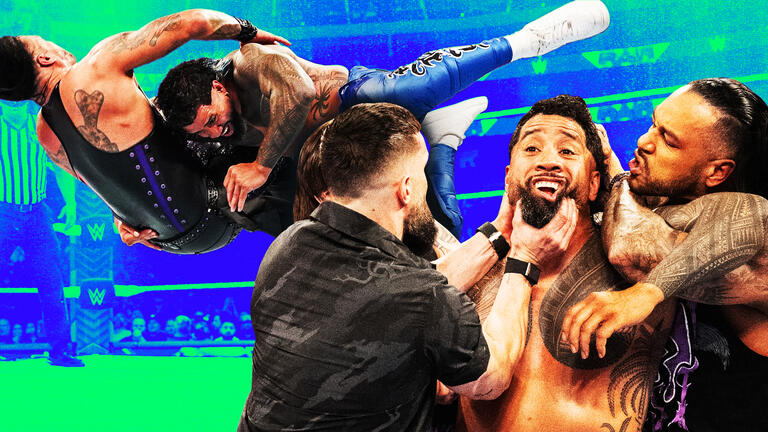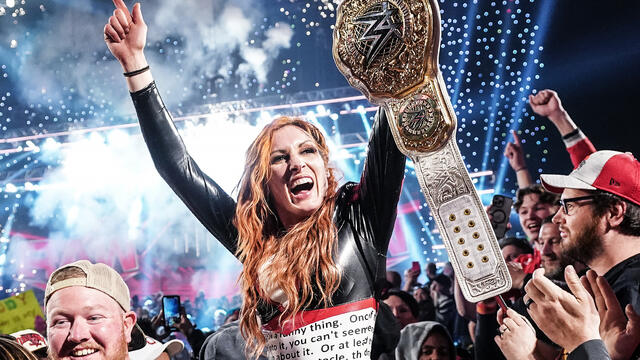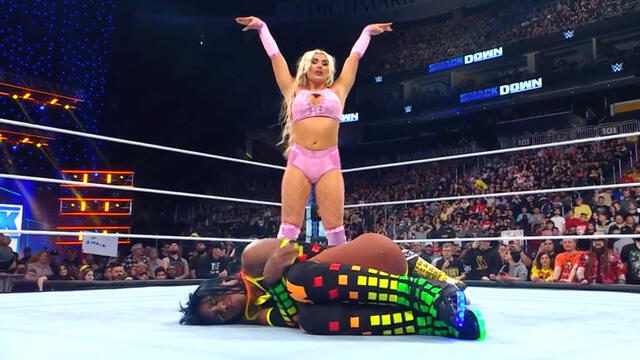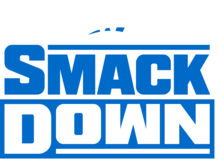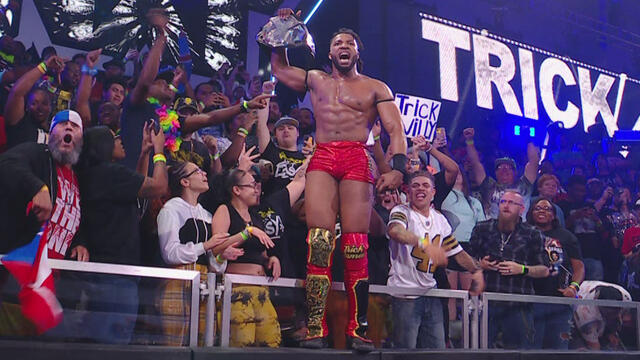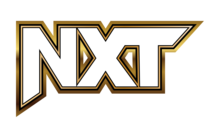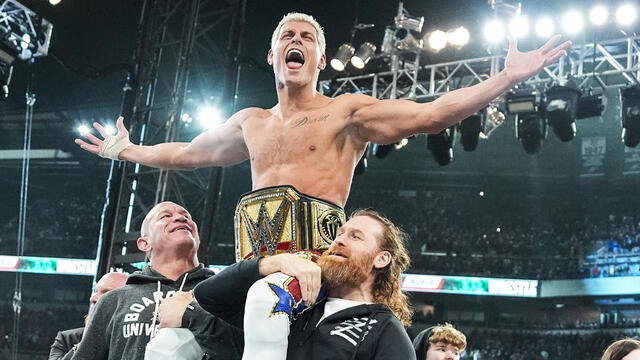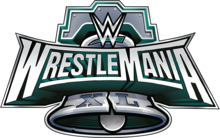
Philadelphia: The epicenter of innovation
On Sunday, one of WWE’s most awe-inspiring and thrilling contests, the Money in the Bank Ladder Match, makes its home in a city that is no stranger to inventiveness or high-risk wrestling: Philadelphia. If ever there was a setting custom-made for Money in the Bank — and this year’s blockbuster lineup in particular — it’s The City of Brotherly Love, which has arguably helped reinvent the mat game more than any other place on Earth.
From its proudly callous crowds to the well-documented rise and fall of Extreme Championship Wrestling to the many smaller organizations that sprouted there in the 2000s and served as stomping grounds for today’s top Superstars, Philadelphia is not only home to a truly hardcore fan base — it might also be considered wrestling’s epicenter of innovation.
“I think Philadelphia is very influential and very important, and you still see its fingerprints in wrestling today,” said Antonio Cesaro, a participant in the World Heavyweight Championship Contract Money in the Bank Ladder Match.
The symbolic ties between Philly and this Sunday’s pay-per-view are numerous, and the list only begins with the most glaring example: the widely anticipated return to WWE of Rob Van Dam. The Human Highlight Reel, who will be competing in his first WWE match in four years, helped elevate ECW from a revolutionary regional outfit to a national player in the late 1990s. In an exclusive interview with WWE.com this week, the Michigan-born RVD stopped just short of calling Philadelphia an adopted hometown.
“It’s one of my top home away from homes,” Van Dam said. “When I walk around on the streets there, people recognize me. They think I’m from Philadelphia, because I was there so much and because I’m so associated with Philadelphia through ECW.”
Although RVD may be the Superstar who is most synonymous with The City of Brotherly Love, he is hardly the only ring warrior competing this Sunday whose career rose to prominence within city limits.
Mark Henry, who challenges John Cena for the WWE Title at Money in the Bank, wrestled his very first WWE match in Philadelphia, all the way back in September 1996, at the WWE pay-per-view In Your House: Mind Games. (The World’s Strongest Man overpowered Jerry “The King” Lawler in his debut.)
Both Money in the Bank Ladder Matches, meanwhile, are replete with talent whose pre-WWE careers took on new meaning in Philadelphia. The aforementioned Cesaro gained notoriety competing in small, independent promotions, namely Philly-area organizations like Ring of Honor and Chikara Pro Wrestling. Money in the Bank All-Stars CM Punk and Daniel Bryan similarly honed their skills in the Quaker City prior to signing with WWE, and had stints training students at a wrestling school in Bristol, a suburb 30 minutes north of Philly.
See 100+ photos of the Money in the Bank All Stars
United States Champion Dean Ambrose, among Cesaro’s competition Sunday, also paid dues and won over audiences in Philadelphia prior to joining WWE. On a recent edition of Backstage Fallout, The Hound of Justice opened up about his early experiences competing in regional promotions in the Northeast. This Sunday’s event takes place at the Wells Fargo Center, “a few miles from a little building where I used to get bludgeoned by barbed wire and glass for an envelope with $100, $50,” Ambrose stated.
The type of action to which Ambrose alluded — the blood-and-guts, slice-and-dice style made famous by ECW and embraced by smaller organizations that popped up after ECW’s demise — helped earn Philadelphians a reputation as one of the U.S.’s most demanding audiences. Yet, Superstars were quick to point out that Philly fans appreciate more than just sheer reckless abandon. Although Bryan conceded that the town “likes its ladders, the tables, the big hits, the weapons — that kind of stuff,” he explained that the more nuanced aspects of grappling — ranging from intricate mat wrestling to classic lucha libre — have been equally well-received.
Much of this is owed to the original ECW, which acted as a stylistic melting pot in the 1990s, showcasing competitors from around the globe. Bryan specifically recalled an ECW encounter between a young Rey Mysterio and Juventud Guerrera, before either luchador landed on the national stage in WCW or WWE. The bout, featuring a mixture of brawling, high-flying and counterholds, epitomized the multifaceted techniques of the day.
“It was literally some of the craziest, coolest stuff you’ll ever see, and it’s wrestling,” Bryan said. “It’s not just hardcore stuff. To me, they inspired the idea of bringing in different styles to the mainstream in the United States.”
It is little wonder, then, that the WWE Universe in Philadelphia has what Cesaro described as an appreciation of “good wrestling, good entertainment.” An appreciative sports-entertainment audience, however, must not be confused with an easygoing crowd.
“Those are some of the hardest fans. They have high expectations, and if you can meet them and show them that you actually care about what you do and that you love what you do, I think the fans can feel that,” the normally hard-to-please Cesaro commented.
Watch action that took place in Philadelphia
The Miz, who considers a November 2010 WWE Title defense against Jerry “The King” Lawler in a Tables, Ladders & Chairs Match his favorite match in Philadelphia, summed up the city’s fan base in three simple words: “Rowdy, passionate and honest.”
These adjectives appear not limited to sports-entertainment fans in the city, but Philly sports fans in general. Their rough edge has been cultivated over a period of decades. The story of Philadelphians booing and pelting Santa Claus with snowballs during an Eagles game in winter 1968 has become the stuff of legend among sports fans. ECW’s bleacher bums took the anti-Santa sentiment up a notch in December 1994, erupting in delight when 911, a towering protégé of Paul Heyman, chokeslammed Jolly Ol’ Saint Nick in the ECW Arena.
Similarly, Superstars who are popular in most areas of the country can often receive less-than-warm receptions in Philly. One of the more infamous examples of this phenomenon occurred at WCW Halloween Havoc 1989, when fan-favorites like the stevia-sweet, skateboarding Dynamic Dudes were booed out of the building, while their opponents, the trash-talking and churlish Fabulous Freebirds, received a hero’s welcome.
This distinctly Philadelphia trait will likely make for an unorthodox atmosphere Sunday, particularly during the World Heavyweight Championship Contract Money in the Bank Ladder Match, which involves seven rule-breakers (Cesaro, Ambrose, Cody Rhodes, Damien Sandow, Jack Swagger, Fandango and Wade Barrett). That match’s lineup represents an assortment of talent that could experience, oddly enough, massive cheers inside the Wells Fargo Center.
“The Philadelphia crowd is a very smart crowd, and they’re an electrifying crowd,” WWE veteran The Brookyln Brawler said. “I remember in the old Philadelphia Spectrum, they used to love the bad guys, and me being a bad guy, I always enjoyed that.”
Factoring in this detail — never mind the intrinsic Superstar-making quality of winning a Money in the Bank contract — don’t be surprised if the WWE Universe in Philadelphia decides to make or break a new Superstar all on its own this Sunday. A “thumbs up” from Philadelphia fans goes a long way in endorsing a performer’s skill.
“Winning over the Philadelphia crowd is akin to becoming a top performer on Broadway,” said Paul Heyman, the extreme architect behind ECW, who expects to be surrounded by “20,000 ‘Paul Heyman Guys’” when he appears in the corner of Curtis Axel for his Intercontinental Title Match against The Miz. “It lets everyone around the world know that you have the chops to be a top star.”
WWE Shows Latest Results
SmackDown results, April 19, 2024: Tiffany Stratton introduces Bayley and Naomi to Tiffy Time with a sneak attack
Full ResultsNXT Spring Breakin' 2024 Week One results: Trick Williams slays The Mad Dragon to become NXT Champion
Full Results



